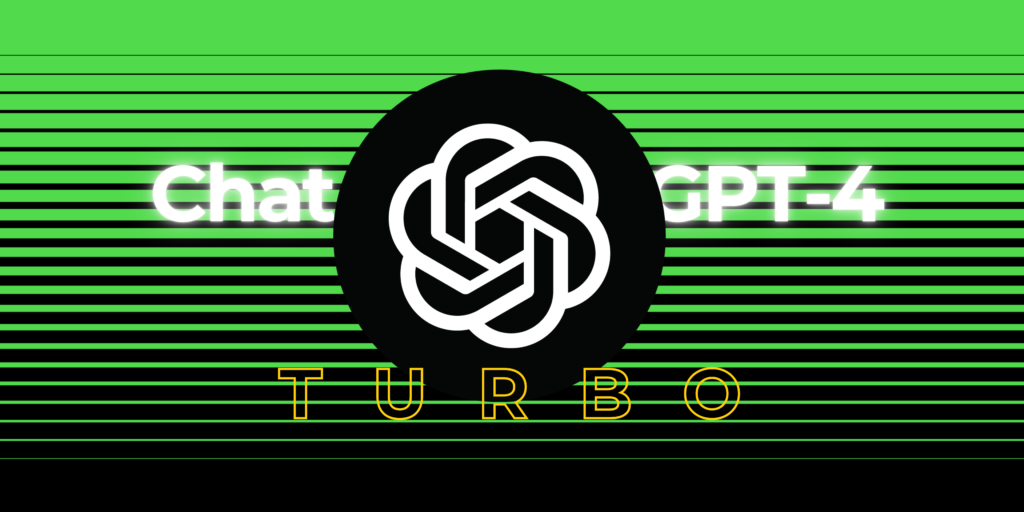1) What is Artificial intelligence
Artificial intelligence (AI) is a very advance method of computer system that can mimic human intelligence to perform task and think like the human mind. AI stand for artificial intelligence. let’s understand the word Artificial first, so whatever is created by human is artificial, like mobile, car, tv, spaceship, robots etc. and we all know that these gadgets perform certain activity.
Now, come to the second word intelligence, so as we human being have an inborn ability to think, understand, learn and by the help of this we can do whatever we can. we call it human intelligence. just like this if a machine can do these things (like think, understand, learn and do certain activity) then it is called artificial intelligence.
2) How does artificial intelligence work?
Artificial Intelligence is a computer system with the large sets of data. AI system work by combining all this data to learn pattern and feature in the data that they analyse. AI system analyse all this data with intelligent and iterative processing algorithms to learn pattern and feature from it. When Artificial Intelligence analyse data it tests and measure its own performance and develops additional expertise and make its own decision to perform a specific task.
With the help of analyse data and learn from it AI can be applied to everything from understanding human speech, self-Driving cars, playing games and etc. AI use advance techniques and technology to analyse data and learn patterns to perform a specific task.
Let’s understand this technique and technology…
Machine Learning :- In general, machine learning involve adaptive mechanisms that enable computer to learn from experience, learn by example and learn by analogy. learning capabilities can improve the performance of an intelligent system over time. machine learning allows AI to find patterns in data and learn from it.
Neural Network :- A neural network can be defined as a model of reasoning based on the human brain. the brain consists of a densely interconnected set of nerve cells, or basic information-processing units, called neurons. Neural network operate like network of neurons in the human brain. this neural network allow AI system to analyse large data, uncover pattern and find the right answer about it.
Deep Learning :- Deep learning is a subset of Artificial intelligence. Deep learning is type of machine learning inspired by the structure of the human brain. Deep learning uses Artificial neural network which mimic biological neural network in the human brain to process information and find connection between the data. Deep learning use many layers of processing units to analyse data.
Cognitive computing :- Cognitive computing allow computer system to mimic the way that a human brain works. cognitive computing solved complex task, analyse image text and speech.
Natural language processing :- Natural language processing is a branch of artificial intelligence. this system allow computer to recognize, analyse and understand human language, either spoken and written.
Computer Vision :- This system allow AI to recognize, analyse and ability to understand images. with the help of computer vision Artificial intelligence can capture images or video in real time and interpret their surroundings.
3) types of Artificial intelligence :-
Artificial Intelligence can be divided in various types, there are mainly four types of ai.
The four A.I. types are :-
I) Reactive Machines :- These are the oldest forms of AI systems. They have extremely limited capability. They copy the human mind’s ability to respond to different kinds of stimuli. These machines can not perform activities which is memory-based. What this means is whatever the experiences these machines gained previously, they cannot use those experiences to inform their present actions, i.e., these machines do not have the ability to “learn.” These machines could only be useful for those tasks which is automated backed by a limited set or combination of inputs. They cannot be used to depend on memory to improve their operations based on the same.
There are many example of Reactive AI. A popular example of a reactive AI machine is IBM’s Deep Blue, a machine that beat chess Grandmaster Garry Kasparov in 1997. Another examples are
Spam filters,
Netflix recommendation engine etc.
II) Limited Memory :- Limited memory machines are just like Reactive machine with some extra capabilities. So what is the extra capabilities? These machines are also capable of learning from previously gathered data to make decisions.
Almost every existing applications that we know of come under this category of AI. All present-day AI systems, such as those using deep learning, are trained by large volumes of training data that they store in their memory to form a reference model for solving future problems. For instance, an image recognition AI is trained using thousands of pictures and their labels to teach it to name objects it scans. When an image is scanned by such an AI, it uses the training images as references to understand the contents of the image presented to it, and based on its “learning experience” it labels new images with increasing accuracy.
Almost all these day’s AI applications, from virtual assistants and chatbots to self-driving vehicles are all driven by limited memory AI.
III) Theory of Mind :- The first two types of AI that we saw are common but the next two types of AI exist either as a concept or a work in progress.
If I ask you that have you ever played any video games? I can guess that almost every one of you have played video games. So what is the common thing in every video games? One of the most common things in every video games is levels. So just like video games, According to researchers theory of mind is the next level of AI systems. This next level AI will be able to better understand the entities it is interacting with by understanding their needs, emotions, beliefs, and thought processes. While artificial emotional intelligence is already a budding industry and an area of interest for leading AI researchers, achieving Theory of mind level of AI will require development in other branches of AI as well. This is because to truly understand the needs of humans. AI machines will have to perceive humans as individuals whose minds can be shaped by multiple factors, essentially “understanding” humans.
IV) Self-Awareness :- Now we have to the 4th type of AI which currently exists only hypothetically.
If we talk about Self-Awareness, what does it means is that you are aware of your “self”. So we can say that self awareness level AI is an AI that has evolved to be so alike to the human brain that it has developed self-awareness. It is obvious that creating this type of AI require more research and more time. This will always be the ultimate objective of all AI research.
This type of AI will not only be able to understand and generate emotions in those it interacts with, but also have emotions, needs, beliefs, and potentially desires of its own. Although we as technology enthusiasts, we believe that the development of self-aware AI can potentially boost our progress as a civilization by leaps and bounds, while some are also believing that it can also potentially lead to destruction.
Why some are believing that self-aware AI could be destructive? Because they say there is a possibility in which once self-aware AI would be capable of having ideas like self-preservation which may directly or indirectly spell the end for humanity, as such an entity could easily outmaneuver the intellect of any human being and plot elaborate schemes to take over humanity.
I want to share with you something that we know that we as a humaity are creating AI for our well-being. So it’s must be work the way we want it to be.
4) Strong AI vs weak AI
Artificial intelligence is the basis of computer learning. It is the future of independent decision-making in complex situations. Today most of the automated processes are built from AI. Artificial intelligence can be further divided into two main types. They are – Strong AI and Weak AI.
The main difference between strong AI and weak AI is that strong AI is the future of artificial intelligence while weak AI is the present form of artificial intelligence.
Strong AI can solve a diverse range of problems and develop new approaches to solve the task while Weak AI is only able to accomplish specific problem reasoning and solving tasks.
Strong AI can be in the form of a machine that is built like a man and has a similar sensory perception as the human. The machines and programs have a mind of their own which helps them to think and accomplish complicated tasks without the interference of humans. For example – Robots
On the other hand, Weak AI is in the form of a machine that is built with pre-designed and pre-determined responses and answers. Any question or problem that is presented before a Weak AI is supported by an answer from the predetermined sets. Weak AI has wide applications in various devices.
5) Application of AI
Today, almost every industry is using Artificial intelligence. And because of it’s vast application range it can be useful for more sectors as well.
Let’s see application of AI in some major industries…..
•AI in Health care :- In the last decade, AI becoming more advantageous for the healthcare industry and going to have a significant impact on this industry.
Healthcare Industries are using AI to make a better and faster diagnosis than humans.
AI can help doctors to know patients well and can inform when patients are worsening so that medical help can reach to the patient before hospitalization.
• AI in Finance :- AI and finance industries are the best matches for each other. The finance industry is implementing automation, chatbot, adaptive intelligence, algorithm trading, and machine learning into financial processes.
• AI in Astronomy :- Artificial Intelligence can be very useful to solve complex universe problems. It can be helpful for understanding the universe such as how it works, origin, etc.
• AI in education :- AI can automate grading so that the tutor can have more time to teach.
AI chatbot can communicate with students as a teaching assistant.
AI in the future can be work as a personal virtual tutor for students, which will be accessible easily at any time and any place.
• AI in Agriculture :- Agriculture is an area which requires various resources, labour, money, and time for best result. Now a day’s agriculture is becoming digital, and AI is emerging in this field. Agriculture is applying AI as agriculture robotics, solid and crop monitoring, predictive analysis. AI in agriculture can be very helpful for farmers.
• AI in Gaming :- AI can be used for gaming purpose. The AI machines can play strategic games like chess, where the machine needs to think of a large number of possible places.
• AI in Robotics :- Artificial Intelligence has a remarkable role in Robotics. Usually, general robots are programmed such that they can perform some repetitive task, but with the help of AI, we can create intelligent robots which can perform tasks with their own experiences without pre-programmed.
Humanoid Robots are best examples for AI in robotics, recently the intelligent Humanoid robot named as Erica and Sophia has been developed which can talk and behave like humans.
• AI in Data Security:- The security of data is very crucial for every company and cyber-attacks are growing very rapidly in the digital world. AI can be used to make your data more safe and secure. Some examples such as AEG bot, AI2 Platform, are used to determine software bug and cyber-attacks in a better way.
• AI in Automotive Industry:- Some Automotive industries are using AI to provide virtual assistant to their user for better performance. Such as Tesla has introduced Tesla Bot, an intelligent virtual assistant.
Various Industries are currently working for developing self-driven cars which can make your journey more safe and secure.
•AI in E-commerce :- AI is providing a competitive edge to the e-commerce industry, and it is becoming more demanding in the e-commerce business. AI is helping shoppers to discover associated products with recommended size, colour, or even brand.
6) Advantages and disadvantages of artificial intelligence (AI)
Advantages:-
There is a hell lot of advantages of AI. History has shown to us that technology always transform humanity into the next level. So, we believe that AI will also transform us to live a better life.
Out of many advantages, let’s see some advantages into this Article…
• Medical applications
This is the best thing that artificial intelligence has done to humans. It’s said that time and tide waits for none but, with medical applications of artificial intelligence, a wide scope application is present. Doctors assess patients and their health risks with the help of artificial machine intelligence.
The applications help to educate the machine about the side effects of various medicines. Nowadays, medical professionals are trained with artificial surgery simulators. It uses application which helps in detecting and monitoring neurological disorders and stimulate the brain functions.
This also helps in the radiosurgery. Radiosurgery is used in operating tumors and help in the operation without damaging the surrounding tissues.
• Easily handle datas
AI can process large data very easily. It handles the information better than humans.
• Better at repetitive work
AI is very good at doing repetitive work as compare to humans.
It improves work efficiency so reduce the duration of time to accomplish a task in comparison to humans.
• Fast decisions
Based on the data, AI can make fast decisions.
• Rational decision maker
• Zero error in tasks
Disadvantages:-
With the advantages of AI there are some genuine disadvantages too. But If you see the reality then you can easily see this fact that the possibility of good thing will come because of AI is much higher. It could only be dangerous if it is in bad hands.
Let’s see some disadvantages….
• High cost of creation
The implementation cost of AI is very high.
• Difficult to develop software for AI
The difficulties with software development for AI implementation are that the development of software is slow and expensive. Few efficient programmers are available to develop software to implement artificial intelligence.
• Replacement of current jobs
A robot is one of the implementations of Artificial intelligence with them replacing jobs and lead to serve unemployment.
• Hazardous for humanity
Machines can easily lead to destruction if the implementation of machine put in the wrong hands the results are hazardous for human beings.
• No improvement with Experience
7) History of Artificial intelligence
Today everyone is just seeing and listening everywhere about AI. But very few know where it all began.
Let’s look a brief history of AI …..
The history of AI goes way before the term was first coined. It is safe to say that the principle is derived from the Automata theory and found references in many storybooks and novels. Early ideas about thinking machines emerged in the late 1940s to ’50s by the likes of Alan Turing or Von Neumann. Alan Turing famously created the imitation game,
now called the Turing Test.
After initial enthusiasm and funding on machine intelligence until the early 1960s,entered a decade of silence. It was the period of reduced interest and funding on research and development of AI. This period of decline is known as ‘AI Winter.’ Commercial ventures and financial assistance dried up and AI was put on hibernation for the said period.
The late 1970s witnessed a renewed interest in AI. American machine learning pioneer Paul Werbos devised the process of training artificial neural networks through backpropagation of errors. In simple terms — Back Propagation is a learning algorithm for training multi-layer perceptrons, also known as Artificial Neural Networks.
The neural networks consist of a set of algorithms that loosely mimics a human brain. It means much like a human brain; it is designed to interpret sensory data, cluster raw inputs, and classify them accordingly.
1986 saw the backpropagation gaining widespread recognition through the efforts of David E. Rumelhart, Geoffrey E. Hinton, Ronald J. Williams. In 1993, Wan became the first person to win the international pattern recognition contest with the help of the backpropagation process.
Since the emergence of computers and artificial intelligence, computer scientists have drawn parallels between these intelligent machines and human minds. The comparison reached a pinnacle when, in 1997, an information technology company, IBM, created a computer known as Deep Blue to participate in a chess match with renowned chess master Gary Kasparov. The match went on for several days and received massive media coverage. After a six-game match, Gary Kasparov secured a win, Deep Blue secured two wins and rest three draws. The highlight of the spectacle, however, was the ability of machines to push forward the boundaries and lay down a new benchmark for computers.
Deep Blue made an impact on computing in many different industries. It enabled computer scientists to explore and develop ways to design a computer to tackle complex human problems with the help of deep knowledge to analyze a higher number of possible outcomes.
The rise in popularity of social media with Facebook saw the implementation of AI/ML in a wide array of applications. One prominent characteristic was the use of DeepFace. As the name suggests, DeepFace is a deep learning facial recognition system designed to identify human faces in digital images. DeepFace was trained on four million images uploaded by Facebook users and is said to reach an accuracy of 97%. Not so long after, NVIDIA launched Generative Adversarial Network (GAN), which is a class of machine learning designed to generate new data with the same inputs provided. The portraits created by GAN is so realistic that a human eye can be fooled into thinking it as a real snapshot of a person. GAN has seen widespread usage in the creation of celebrity faces. Google’s popular doodles are an outcome of the GAN system.
So this was the history of AI till present.
our other blogs:- what is nft










